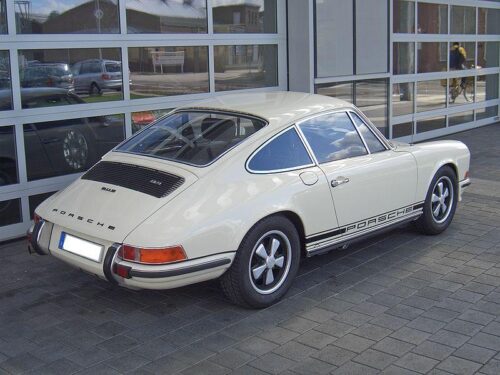
No matter what country you are in, you have a chance to bump into it. A compact, quick and very popular car built in 1963 in Stuttgart is today’s guest of «Legend Alive».
It was in 1963 in Stuttgart, Germany when another model by Porsche which turned out to be the most iconic in the history of the brand – Porsche 911. Initially its digital code «911» was connected with a 1964 model and was not meant for a series but commercial success served to that and by now we can still see more and more generations of its ancestors going off the conveyor and we are going to tell you about that very Porsche which has changed the world.
The history of Porsche can be considered unique, without a doubt. Car-building has not so many examples of such success of a powerful engine with rear-engine layout. For 57 years Porsche 911 has been true to itself and is still running the traditions started in the second half of the 20th century by sticking to the familiar design and outstanding technical parameters.
The first sketch of a «911» made by Ferdinand Alexander Porsche (also known as «Butzi» Porsche – editor’s not) led to an argument between his father, Ferdinand Anton Ernst (mainly known as «Ferry» Porsche – editor’s note) and an Austrian automobile constructor and designer of «Volkswagen Kafer» Erwin Komenda. Ferry liked Butzi’s designed while Erwin was insisting that rear layout exhausted itself for that moment, so, the model needed and technical way-out and, consequently, a different exterior. There had been a severe struggle for Butzi’s draft and finally the sides agreed on a compromise: a coupe with sloping hood, large headlights, rear part of the cabin going down to the bumper and abscence of horizontal planes will be still with the rear-engine layout, an opposite motor with air-cooling system and torsos as elastic elements.
Despite the fact that the first unit of the new model was presented at the Frankfurt Motor Show in 1963, it rather resembled a life-size carcass. The “heart” of the Porsche 911 simply did not have time to make, and it was not possible to fully appreciate the new brainchild of German engineers and designers. But less than a year later, in February 1964, Porsche began testing 911, which once again confirmed the correctness of all decisions made at the development stage, thereby allowing the sale to begin 7 months after the start of testing.
Most likely, the company hoped that the new model would be produced no more than 15 years, since at the turn of the 1970-1980s the model was planned to be discontinued, but demand creates supply, and for 25 years the 911 model, later called the «classic», had been rolled off the assembly line. By the way, there were only two differences between the first and last car of this series — in the security system and the compilation of the power system.
Of course, over the course of 25 years, the car had improved from a technical point of view: for example, the engine capacity had been increased 1.7 times, and power using a turbocharger — 2.3 times! In short, the potential of the classic Porsche 911 was such that for a quarter of a century engineers had no problems with the modification.
By the end of the release of the classic 911, the total number of cars off the assembly line reached 274 thousand! Thus, Porsche became the most popular sports car and one of ten, according to Forbes, which changed the world. And though next generation cars are leaving the conveyor to this day, it was the very classic Porsche 911 created by Butzi Porsche that became the fateful car in the history of the German company.